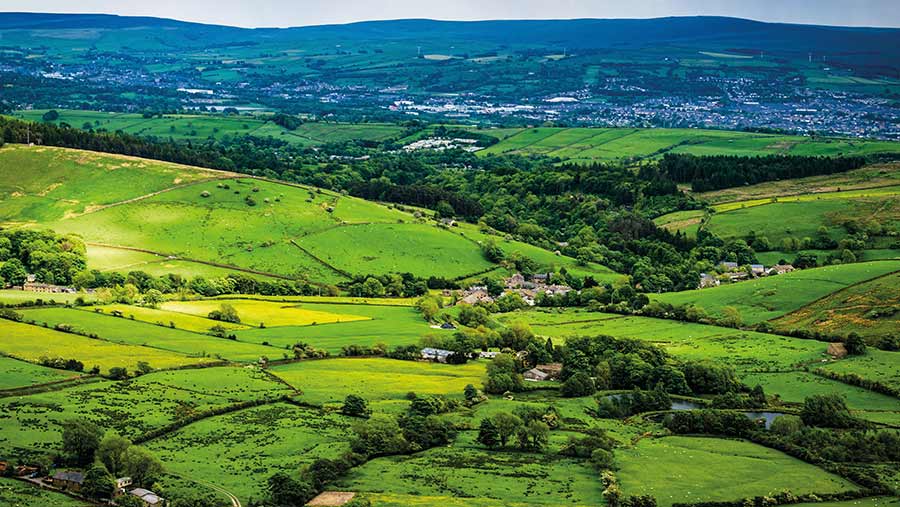Poor grassland and prime arable land set to lead growth in 2023
 © Lucas Puch/Adobe Stock
© Lucas Puch/Adobe Stock Poor-quality livestock land and prime arable land will see the greatest value growth over the next few years, forecasts Savills.
Interest in poorer-quality grazing land for alternative uses has pushed values up by 20% since December 2020, the firm says.
Demand is likely to continue over the next five years as the pressure for carbon and nature solutions on rural land intensifies.
See also: Selling a farm in 2023? Tips to make it a smooth process
Savills notes that Welsh farmland has underperformed compared with growth rates in the rest of the UK and suggests this as an investment tip for capital growth.
The historic lack of supply is behind the firmness of the forecasts, supported by the growing interest in non-food uses including fibre, fuel, rewilding and biodiversity net gain.
The firm predicts that prime arable land values will increase in real terms by 2.5% a year and poor livestock land by 6% a year over the next five years.
This is in contrast to some of the other property asset classes in the forecast, such as retail warehousing, where rental values rather than capital will provide the higher growth rates.
Forecast UK farmland land value rises over next five years (real terms)
- Prime arable land values up 2.5% a year
- Poor livestock land up 6% a year
Low supply v higher interest rates
Low supply will outweigh the impact of higher interest rates on the farmland market, says Savills, supported by the keen interest in non-agricultural uses for land.
“With traditional purchasers of land facing stiff competition from a new era of deep-pocketed nature-positive and impact-motivated buyers, land values are likely to continue to outpace target inflation,” says the forecast.
Residential market
Mainstream house prices are forecast to fall by 10% at a national level in 2023, but with these losses being made up by 2026.
Demand for private rented accommodation will remain high in the face limited supply, says the firm.
The rural rented market is no different. The growth of remote and hybrid working has widened the acceptable commuting distance around towns and cities, pushing up both house prices and rental values.
Competition in this market is seeing some tenants willing to pay a year’s rent up front to secure a property, often funded by deposit savings in a market where these tenants would have been buyers but have not been able to secure a mortgage or a property, says Christopher Miles, a director of Savills farms and estates.
Commercial opportunity
There is an overwhelming lack of UK offices with high environmental ratings, says the firm.
Those looking for rural workspaces, as elsewhere, are increasingly wanting property with sustainable credentials, ideally a carbon-neutral building.
“Continued occupier demand for prime high-quality, highly rated sustainable offices and warehouses is set to deliver rental growth despite any recessionary shocks to demand,” says the forecast.
Landowners looking to convert buildings for alternative uses should bear this in mind, says Mr Miles.
“It makes sense because it lowers the running costs and makes it more attractive overall. It certainly helps with marketing.”
Commercial forestry
Commercial forestry land has seen record capital value growth in the past 20 years but, having matured, this market looks set to calm in 2023.
However, timber supply is tight and the market will continue to be supported by demand.
“Prospects for [forestry] capital growth are more closely linked to timber prices, and we are unlikely to see negative growth over the next five years,” says the report.
“The monetisation of natural capital in response to the climate crisis remains the unknown factor. Converting the theoretical value of woodland into financial returns is key – the government could do more to stimulate demand-side drivers.”
